Current Biology: The Earth’s Magnetic Field and Visual Landmarks Steer Migratory Flight Behavior in the Nocturnal Australian Bogong Moth
(地球磁场和地理标志物共同操控澳大利亚波贡夜蛾的迁徙性飞行行为)
波贡夜蛾的自然迁徙定向
Natural Migratory Orientations of Bogong Moths
A图波贡蛾雄虫;B图迁飞季波贡蛾种群野外迁飞轨迹模拟。
Figure A: Male Bogong moth; Figure B: Stimulation of migratory trajectories of Bogong moth trapped in migrational season under natural sky
像很多鸟类一样,无数的夜蛾科物种可以在夜间进行令人惊叹的长距离迁徙。每年春天,大量的波贡夜蛾(Agrotis infusa)为了躲避澳大利亚东南部不同地区的炎热状况,通过1000公里以上路程的高度定向迁徙,去往曾被作为夏眠地的澳大利亚阿尔卑斯山脉有限数量的凉爽洞穴中。目前还不清楚飞蛾如何在夜晚确定其历代迁飞路线以及定位其迁飞目的地。本文证明了波贡夜蛾可以通过感知地球磁场以及与地理标志物相结合来掌控迁飞行为。通过利用室外飞行模拟器吊飞波贡夜蛾,本项工作发现当显著的视觉地理标志物和自然的地球磁场强度一起改变时,他们飞行方向的改变与预期相符。但是几分钟后当把线索设置成冲突时,蛾子们变得迷失方向。因此该团队得出结论:像夜间迁徙的鸟一样,波贡蛾具有运用磁感受的能力。本文结果首次给出了夜蛾科昆虫利用地球磁场掌控飞行行为的可靠证据。
磁场和视觉信号操控波贡夜蛾的迁徙性飞行行为
Magnetic and Visual Cues Steer Migratory Flight Behavior in Bogong Moths
圆柱形飞行模拟器内壁为纯白色,筒壁底部一圈黑色条带代表地平线,与黑色条带相连的黑三角代表山峰。A图实验1(Experiment 1)中阶段A:地磁北极mN与地理北极gN重合,黑三角在磁场北极顺时针的60°方向处,阶段B地磁北极mN和黑三角向顺时针方向旋转120°后,黑三角处于地理北极gN的180°方向处,阶段C的黑三角位置与阶段B相同,但地磁北极mN与黑三角方向相反,阶段D与阶段A相同;B图对照(Control)试验A,B(B1,B2)阶段与实验1中相同;C图实验2中与实验一大致相同,只是所有角度均按照逆时针方向改变。
The inner wall of the cylindrical flight simulator is white, a black band at the bottom of the cylinder wall represents the “horizon”, and the black triangle connected with the black band represents the “mountain”. In Experiment 1, Stage A: The magnetic north pole (mN) coincides with the geomagnetic north pole (gN), and the black triangle is at the direction of 60° clockwise of the mN. Stage B: the mN and the black triangle are rotated 120° clockwise, now the black triangle is at the direction of 180° of the gN. The position of the black triangle of stage C is the same as that of stage B, but the mN and the black triangle are opposite, and the stage D is the same as that of stage A. Stage A and B (B1, B2) of controlled trial are the same as experiment 1. Experiment 2 was roughly the same as experiment one, except that all the angle differences were anticlockwise.
当磁场与地理标志物在同一方向时,波贡蛾显著定向于地理标志物,当磁场与地理标志物的方向相反时,波贡蛾开始迷航,从定向于地理标志物慢慢向磁场方向定向,说明波贡蛾在定向过程中以地理标志物为信标,使用磁感受来校准飞行方向。
Like many birds, numerous species of nocturnal moths undertake spectacular long-distance migrations at night. Each spring, billions of Bogong moths (Agrotis infusa) escape hot conditions in different regions of southeast Australia by making a highly directed migration of over 1,000 km to a limited number of cool caves in the Australian Alps, historically used for aestivating over the summer. How moths determine the direction of inherited migratory trajectories at night and locate their destination (i.e., navigate) is currently unknown. Here we show that Bogong moths can sense the Earth’s magnetic field and use it in conjunction with visual landmarks to steer migratory flight behavior. By tethering migrating moths in an outdoor flight simulator, we found that their flight direction turned predictably when dominant visual landmarks and a natural Earth-strength magnetic field were turned together, but that the moths became disoriented within a few minutes when these cues were set in conflict. We thus conclude that Bogong moths, like nocturnally migrating birds, can use a magnetic sense. Our results represent the first reliable demonstration of the use of the Earth’s magnetic field to steer flight behavior in a nocturnal migratory insect.
When the magnetic field and the visual landmark were in the same direction, Bogong moth was significantly oriented to the visual landmark; when the magnetic field was opposite to the direction of the visual landmark, Bogong moth began to disorientate and gradually oriented to the direction of the magnetic field from the orientation to the visual landmark, indicating that the Bogong moth used the visual landmarksas the beacon in the orientation process and used magnetic sensing to calibrate the flight direction.
编辑:吕长宁
原文信息:Dreyer, D. et al., The Earth’s magnetic field and visual landmarks steer migratory flight behavior in the nocturnal Australian Bogong moth, Current Biology (2018), https://doi.org/10.1016/j.cub.2018.05.030


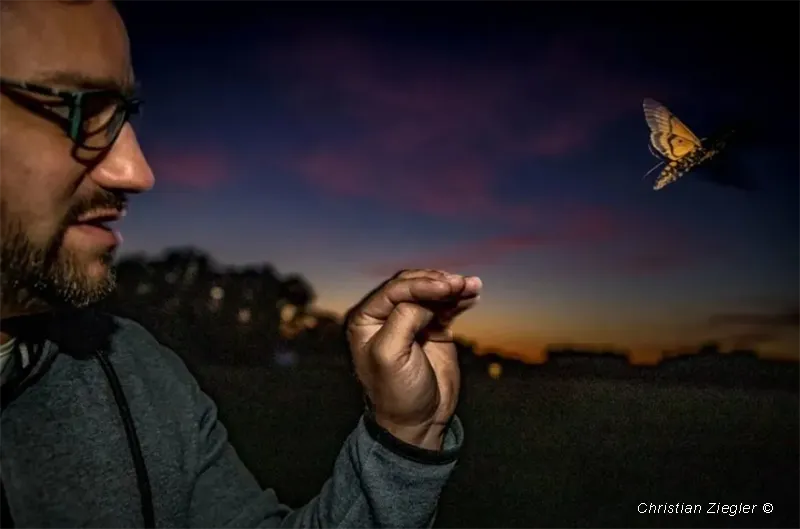


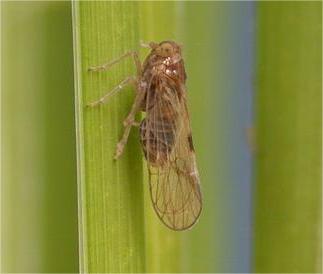
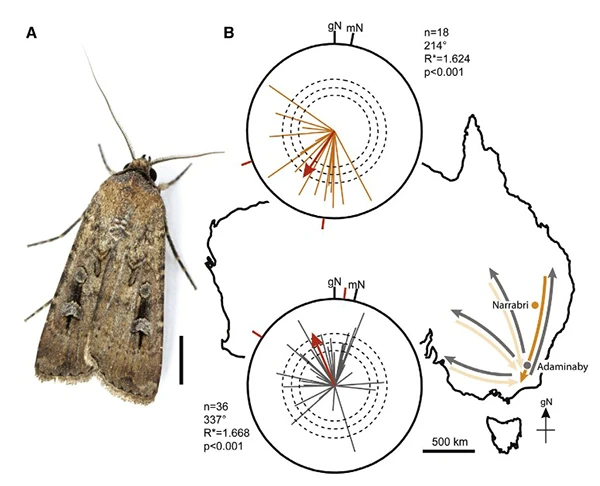
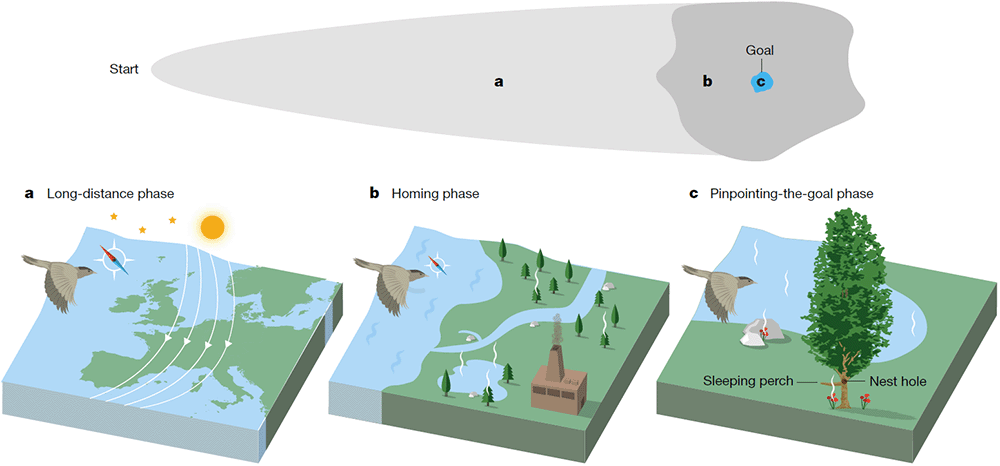
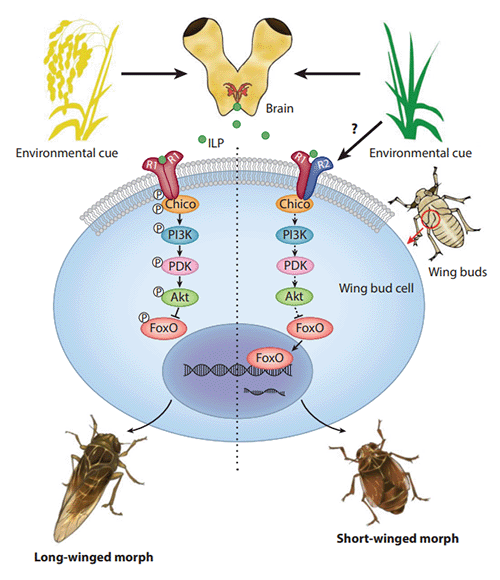
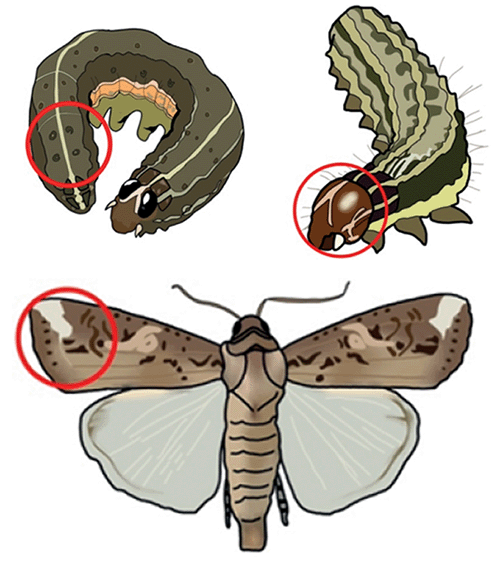



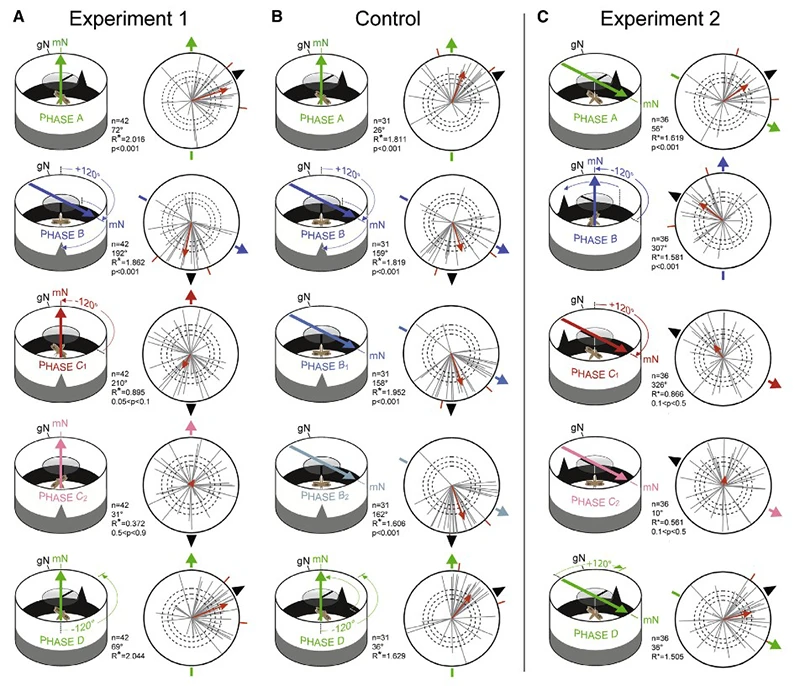
发表回复